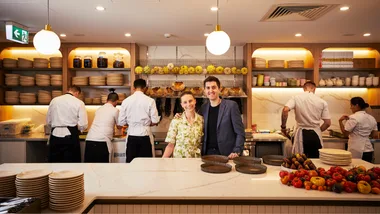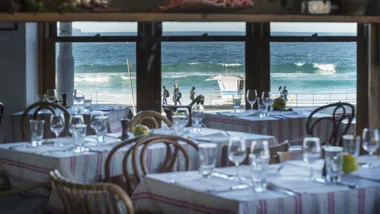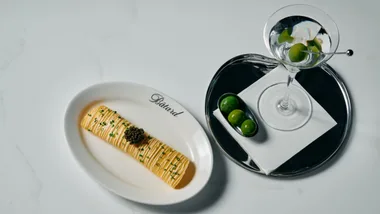From pods to delivery-only dining, here are the things we learnt at the Future Laboratory’s Food and Drink Futures Forum.
The future has been podified. That’s just one of the take-home messages from the Food and Drink Futures Forum held in Melbourne last week. Giving its hospitality-industry clients the jump on global trends, the London-based Future Laboratory has cast its eye across all four corners to predict what we’ll be eating, drinking and Instagramming in three to five years’ time. Here’s what the future has in store.
*The pod revolution (the Future Laboratory calls it “pod-novation”) means the capsule delivery system pioneered by Nespresso will be hacked by more and more companies creating pods filled not just with coffee but with liqueurs, syrups, natural bitters and juices.
*Clean eating is the latest dietary trend set for a backlash, thanks in part to years of contradictory recommendations from health authorities about what we should (and shouldn’t) be eating. “People are tired of being told what to do by experts,” says Future Laboratory co-founder Martin Raymond. “One day it’s no fat, then gluten, then sugar… In this environment, consumers are losing faith in brands and realising that convenience trumps all.” A case in point: around 24 per cent of US consumers ignore nutritional labels, up from 15 per cent a decade ago.
*More information, please. Diners of the future will be demanding more transparency about the food they’re eating – to the point that nutritional information will be written on menus. Consider it a side-effect of the now-standard listing of ingredient provenance – which, incidentally, is here to stay. As Future Laboratory co-founder Chris Sanderson says, “As someone who eats out three times a week it would be so helpful.” Increasingly, health-conscious diners will also want to see more portion control, which sounds like a win-win for restaurateurs.
*Delivery-only dining. Established restaurateurs will be tapping into the growing home-delivery market by bypassing the traditional bricks-and-mortar operations (an early adopter: David Chang’s Ando in New York City). “If you know the brand and trust the brand, that’s really what they’re delivering,” says Sanderson. Also expect to see more emphasis on healthy versions of traditional takeaways as millennials struggle to balance their desire for healthier food with busy working lives.
*Low-alcohol booze is the new Negroni. Consumers’ drinking habits are evolving to appreciate tipples with a lower alcohol content that offer a buzz without the same risk of a hangover. Bold Shim Gin, soon to be released by Four Pillars, the Healesville-based Future Laboratory darlings, has a regular alcohol content of about 42 per cent but is designed to be poured in only 15ml measures with 100ml soda, creating a sparkling drink with an alcohol content of about seven per cent. Good old hardcore whisky, on the other hand, will continue to boom.
*Healthy hedonism is on the rise. Organic alcohol, juices, teas and sodas are keeping company with, and collectively taking the guilt out of, the cocktail scene.
*Coffee is riding the wave created, in part, by a downturn in alcohol – revenue in the Australian café market is expected to increase by 6.9 per cent in 2016-17 to a staggering $5.5 billion. The ready-to-drink format is running interference, however: cold brew (otherwise known as – shock, horror – coffee in a can) is revolutionising the industry, with the quality difference between bottled and on-premises varieties set to disappear. “The idea is that we’ve become less fixated on the delivery system,” says Sanderson. “Café culture is going mobile.”
***Get used to the charge of the Instagram brigade**, and of new social network Yummi where users share their food photographs. Restaurants will be increasingly considering the plates they use and lighting they offer to help snaps reach maximum potential on social media. “It’s this whole idea of gastronomy fetishisation. It’s highly visual, highly engaging… food as theatre, food as porn, continues to be massively relevant,” says Sanderson. Say it ain’t so, Joe.










